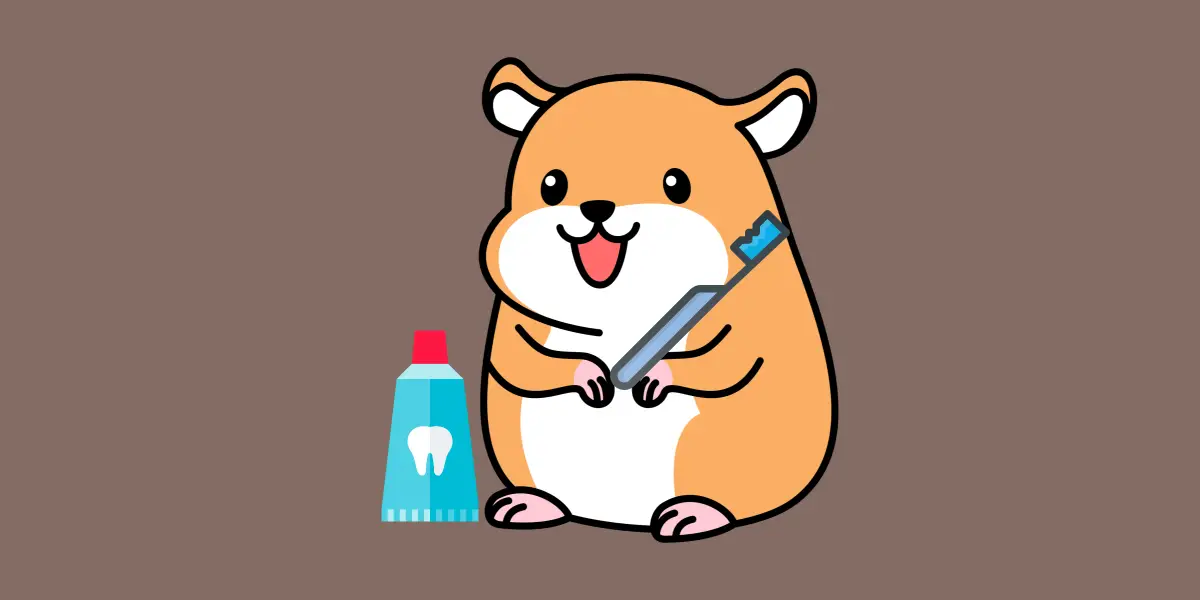Teeth are a defining characteristic of hamsters. After all, they’re rodents — the very word rodent comes from a Latin word meaning “to gnaw.”
Because hamsters rely so heavily on their teeth, it’s important to make sure their mouths stay healthy and strong. We’ll cover what healthy teeth look like, how to maintain your hamster’s health, and common dental problems in hamsters and their treatments, so you can be the best hamster parent you can be!

Contents
Facts About Hamster Teeth
Hamsters have one set of teeth that grow throughout their entire life. They must continuously wear their teeth down to maintain a manageable length.
Many herbivores, including hamsters, have hypsodont teeth. These are teeth that have high crowns, with enamel extending below the gumline. Their teeth appear long compared to many other pets, but they’re like icebergs — they’re even longer underneath the gum line!
Unhealthy teeth in hamsters can be dangerous. They can lead to malnutrition, unwanted weight loss, infection, discomfort, and in the most extreme cases, death.
What Do Healthy Hamster Teeth Look Like?
A hamster’s teeth are in good shape when they are a brownish-white, sometimes yellowish-orange color. It is normal for teeth to darken in color as the hamster ages.
There are two pairs of incisors, on the top and the bottom. Each pair should be approximately even with one another. The bottom teeth will be slightly longer than the top two.
Healthy Hamster Behavior
Observe your hamster daily to get a sense of its normal routines. Watch for these healthy behaviors.
- Eating normally, with ease
- Active, alert and playful, especially at night
- Chewing on provided chew toys
If your hamster is doing these things, they most likely have good mouth health.
How Do I Keep My Hamster’s Teeth and Mouth Healthy?
In addition to regularly observing your hamster to make sure it is comfortable and enjoying its routine, follow these guidelines for healthy teeth and mouth:
- Don’t feed your hamster too much sweet food.
- Ensure your hamster is getting enough calcium and vitamin D to avoid calcium deficiency.
- Only feed your hamster small chunks of food
- Maintain good hydration by providing constant access to water
- Provide plenty of chew toy options
Chew Toys for Hamsters
In the wild, hamsters constantly chew on items they encounter throughout their environment. In captivity, pet hamsters greatly benefit from having chew toys in their cages.
Provide wood in different shapes, sizes and hardnesses. Harder wood, such as apple, is especially beneficial. Make sure any wood you give your hamster is untreated and non-toxic. Your best bet is to purchase toys made for chewing from a pet store.
Offer your hamster crunchy snacks, such as hard dog biscuits (which are also a great source of calcium); oven-baked hamster treats; or the occasional fresh foods like carrots, celery or apples.
Calcium and mineral blocks are another great chew toy. You can attach them to the cage’s side wiring or place them directly in the cage. Your hamster will gnaw delightfully, wearing down its teeth and getting a nice extra dose of vitamins and minerals.
Common Tooth and Mouth Problems in Hamsters
There are three prevalent health issues that hamsters encounter — overgrown teeth, misshapen or broken teeth and infections.
Overgrown Hamster Teeth
It is rare to find hamsters with overgrown molars (back teeth). It is much more common to find overgrown incisors (front teeth).
You’ll be able to tell if your hamster’s incisors are too long. If they’re sticking outside of the lips, or they’re curving, they will need to be trimmed.
If overgrown teeth go untreated, they can turn into dangerous health concerns. They could grow into a hamster’s gums, tongue, or even into the roof of its mouth, even creating a hole connecting to the nasal cavity.
Misshapen or Broken Hamster Teeth
Misshapen or broken teeth are most frequently caused by calcium deficiencies, overgrown teeth or birth defects.
If your hamster frequently chews on the metal bars of its cage, or other extremely hard materials, they are at risk of breaking their teeth. Try supplying them with more appropriate chew toys and other enrichment activities so they don’t get bored.
Infected Gums and Teeth in Hamsters
Food can get stuck in molars and cheek pouches, resulting in:
- Cavities
- Difficulty eating
- Swollen jaws
- Swollen area around eyes
- Unwanted weight loss
- Bad breath
If you notice these symptoms in your hamster, schedule a vet appointment as soon as possible.
Common Treatments for Hamster Dental Problems
For overgrown teeth, your veterinarian will mostly likely perform tooth trimming. For elderly or ill hamsters, this sometimes needs to be done regularly.
For cavities or mouth infections, hamsters may require surgery, antibiotics and painkillers.
Make sure you always take your hamster to the exotic vet for its annual checkup to make sure it’s in good health!
